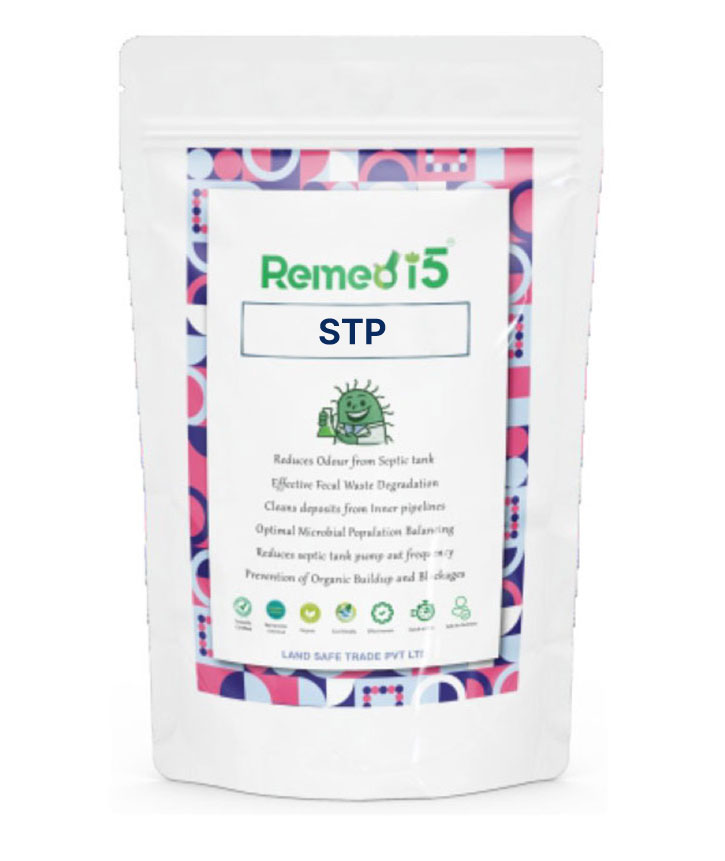
Remedi5 STP
Remedi5 STP features a powerful consortium of specialized bacterial strains meticulously chosen for their efficiency in sewage treatment. These microorganisms excel in breaking down complex organic matter typically present in sewage systems. Designed for resilience and high-performance efficiency, the carefully selected strains ensure consistent and reliable treatment, even in challenging conditions. This enhances operational stability, reduces downtime, and optimizes sewage treatment capacity.
These are different types of Sewage Treatment Processes (STPs) used for wastewater treatment
-
- ASP (Activated Sludge Process) – A biological treatment method where microorganisms break down organic matter in aeration tanks, followed by sedimentation to separate sludge.
- E-ASP (Extended Activated Sludge Process) – A modified version of ASP with a longer retention time, leading to better organic matter degradation and reduced sludge production.
- SBR (Sequencing Batch Reactor) – A batch process that treats wastewater in sequential steps of filling, aeration, settling, and decanting, offering flexibility and efficiency.
- MBBR (Moving Bed Biofilm Reactor) – Uses floating bio-media to provide a large surface area for microbial growth, enhancing biological treatment in a compact design.
- MBR (Membrane Bio-Reactor) – Combines biological treatment with membrane filtration for superior effluent quality, effectively removing suspended solids and pathogens.
Each of these processes is suited for different applications based on treatment requirements, space availability, and operational efficiency.
-
- Mix 1Kg of Remedi5 in 20 liters of feed water (For larger volumes, use 2Kg in 40 liters, and so on).
- Stir the mixture well and apply it as per the recommended dosage schedule.
- Daily dosage quantity depends on the wastewater volume and organic load for optimal treatment efficiency.
